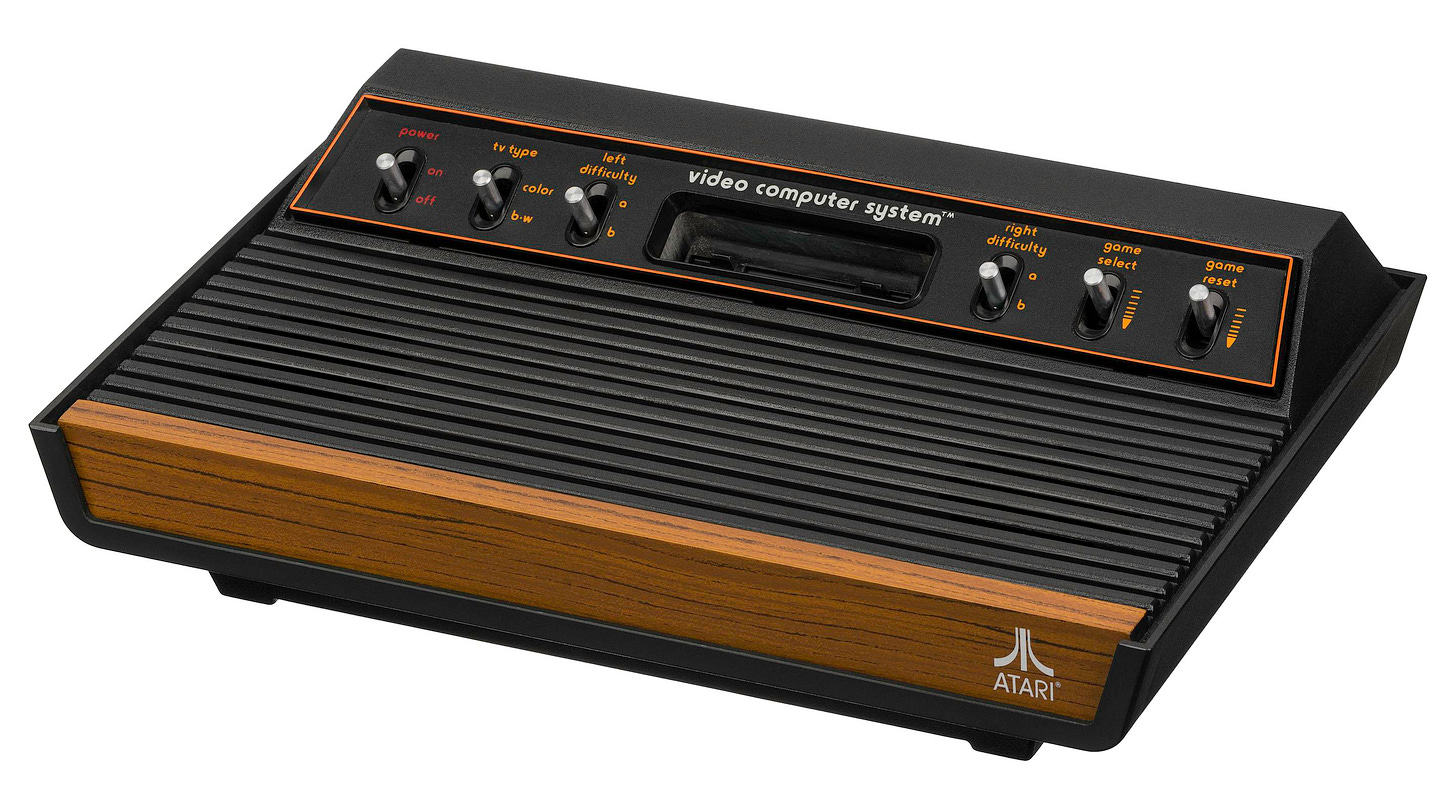A Brief History of Atari
From Arcade games, to computers, to home video game consoles, Atari tried it all
First published as a 3-part series in 2022, this is a newly updated and combined (5500+ word) article about Atari. The full article is available to Goto 10 paid members. Consider upgrading to read to this article, get an extra article each week plus get access to the full Goto 10 archive with 150+ articles.
It all started with Nolan Bushnell, who founded Atari on June 27, 1972 after his first company (Syzygy) and first arcade game (Computer Space) failed, probably because of their terrible names. Atari, as most might know these days, is a term from the game “Go” and is roughly equivalent to “check” in chess. Considering Atari still has brand recognition to this day, it is a great name.
Arcade Games
Atari started off by making arcade games and the first arcade game released by Atari was the infamous Pong, based on the tennis game from the Magnavox Odyssey. Pong became a huge hit and Atari started making more and more arcade games and grew rapidly over the next few years.
Other famous games include:
Tank
Breakout
Asteroids
Sprint
Pong At Home
To capitalize on the success of Pong in the arcades, Atari started working on a home version of Pong in 1974 and begin selling Home Pong in 1975 as a simple device you could attach to your TV to play Pong. This proved popular as well, at least for a while.
Atari soon realized it might be worth having a home system with interchangeable games which would help keep people interested longer and would give them another way to monetize their arcade game titles.
Video Computer System
In 1975 work began on what would become the Video Computer System (VCS), a video game console that connected to a TV and let you swap in game program cartridges.
The Atari VCS was designed by Jay Miner and his team using the 6507 CPU, which was a stripped down and less expensive 6502.
The specs for the Atari VCS were insanely primitive by any measure. It only had 128 bytes of RAM! It did not have any bit-mapped graphics. All screen output was drawn while the game was running from the cartridge. Called “racing the beam”, programmers had to provide the data to draw things as the electron beam was drawing the image on the TV. Game logic ran in the short periods while the electron gun was not drawing as it moved from the right to left or from the bottom to top.
This is all rather crazy to think about today and was/is incredibly difficult.
Games programs initially were just 4K, but eventually larger games were possible once ROM prices dropped and bank-switching became viable.
During development of the VCS, money was running tight and Bushnell needed investors to complete the project. In 1976 he sold Atari to Warner Communications for about $30 million.
In 1977 the Atari VCS was released at a price of $199 ($1010 in 2023). It initially did not sell all that well, and Bushnell ended up leaving Atari in late 1978.
However in 1980 with the release of the Space Invaders cartridg,e sales took off and the video game boom was born. The VCS eventually sold about 30 million units before it was discontinued in 1992!
In 1981, after failing to get recognition for the games they created for Atari, several employees left to form Activision, the first 3rd party video game company. Activision produced many stellar games for the Atari VCS, most notably Pitfall!.
When originally conceived the Atari VCS was expected to have a lifespan of 3 years. It obviously lasted much longer than that, but Atari did quickly begin planning for its replacement.
In 1982 with the introduction of the Atari 5200, the Atari VCS was rebranded as the Atari 2600. It is know by both terms today, which are often used interchangeably.
Atari 8-bit Computers
The Atari 8-bit computers started life as the replacement for the Atari VCS and were largely developed by the same team. After development began, the home computer industry was kicked into gear in 1977 with the holy trinity of the Apple II, Commodore PET and Radio Shack TRS-80. Atari wanted in on that action and pivoted their work to create a computer line.
Paid members continue below with the remaining content covering 1979 to 1996. Consider upgrading to read to the rest of this article, get an extra article each week plus get access to the full Goto 10 archive with 150+ articles.





